Millionaires in Prison

Brief Synopsis
Cast & Crew
Ray Mccarey
Lee Tracy
Linda Hayes
Raymond Walburn
Morgan Conway
Truman Bradley
Film Details
Technical Specs

Synopsis
Five millionaires who have run afoul of the law are sent to prison, where they fall under the kindly supervision of Nick Burton, the humanitarian "czar" of the convicts. Because of Nick's intervention, young Dr. William Collins, who has been jailed for reckless driving, continues his valuable experiments with the deadly Malta fever virus under the supervision of the prison physician Dr. Lindsey. To facilitate the experiments, Nick convinces millionaires Bruce Vander and Harold Kellogg, who are in prison for income tax evasion resulting from corporate mismanagement, to donate enough money to insure a quartet of human guinea pigs. Meanwhile, Nick's vigilance prevents millionaires James Brent and Sidney Keats, two stock swindlers, from fleecing the inmate population with phony copper stock. After his experiment proves successful and he finds the cure for Malta fever, Dr. Collins has his medical license and respect restored and both he and Nick win paroles for their valuable contributions.

Director
Ray Mccarey
Cast

Lee Tracy

Linda Hayes

Raymond Walburn
Morgan Conway
Truman Bradley

Virginia Vale

Cliff Edwards
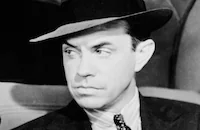
Paul Guilfoyle
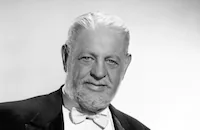
Thurston Hall
Chester Clute

Shemp Howard
Horace Macmahon
Thomas E. Jackson
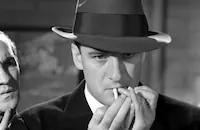
Elliott Sullivan
Selmer Jackson
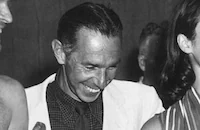
Jack Arnold
Frank O'connor
Anthony Warde
Robert E. Keane
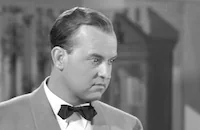
Grady Sutton
Chester Tallman
Larry Mcgrath
Roger Laswell
Dell Henderson
Leo Cleary
John Sheehan
Bruce Mitchell
John Dilson
Sam Stein
Kenneth Harlan
Joe Devlin
Carol Tevis
Carol Wayne
Grace Lenard
Al Seymour
Brooks Benedict
Eddie Hart
Hal K. Dawson
Don Mcnamee
Crew
Howard Benedict
Jerry Cady
Carroll Clark
Frank Fenton
Harry Mancke
Lee Marcus
Martin Mooney
Van Nest Polglase
Renie
Lynn Root
Richard Van Hessen
Vernon L. Walker
Theron Warth
Roy Webb
Harry Wild

Film Details
Technical Specs

Articles
Millionaires in Prison
Pile on two threadbare romantic subplots, a rumored prison break, and the evil pair of millionaires' decision to scam the cons out of their stashed dough with a fake copper mine investment scheme, and you've got more than any one 64-minute movie can handle. But that's not all: all other considerations, including the comedic variety, get sidelined before the film's half through the mission of Bradley's doctor (looking quite like a rugged Josh Brolin), whose pining for a research opportunity to cure an exotic infection in the penitentiary infirmary gets both the staff doctor (Selmer Jackson) and Tracy's schemer (who has wheedled his way into a cushy infirmary work detail) motivated to make it happen. Stunningly, this entails testing a new serum on humans, which means infecting four hapless convicts and hoping they don't die. Funding is squeezed from the comic-relief millionaires, Tracy's character imperceptibly morphs from a wiseass criminal into a righteous do-gooder, and the whole prison eagerly awaits news of the guinea pigs' fate...
This cockeyed narrative was concocted by three screenwriting contract B-listers (including Martin Mooney, who helped on Edgar G. Ulmer's Poverty Row classic Detour six years later), and directed by Leo McCarey's younger brother, generating exactly the kind of low-bar, fast-and-loose program-filler that audiences in 1940 ate up by the truckload. Moviegoing was like television then, and a double bill with newsreels and cartoons could last four hours, during which there was little impetus to conceive of any one movie, seen during one of two or three moviegoing jaunts that week, as needing to be an epochal, live-changing masterpiece. As Jean-Luc Godard would attest in his homage-twisty New Wave films of the '60s, movies weren't high-pressure, alternate-reality "events," but part of daily life, and most moviegoers saw them that way.
But a movie called Millionaires in Prison produced at the tail end of the Great Depression must've seemed like a slam-dunk idea - satisfying the sublimated bloodlust of America's beaten working class by hypothetically punishing the banking and finance 1% responsible for the economic collapse. (Unemployment was still around 15% in 1940.) The resonance of the title alone promises so much. But of course McCarey's movie detours away from even the mildest political-economic critique; as throughout the '30s, because Hollywood was not made up of unemployed workers unable to pay their rent, the wealthy are alternately objects of whimsy or aspiration. Socialism was ascendant in the '30s; labor unions and the hundreds of newspapers they published, as well as the Spanish Civil War, kept that ideology burning, even as the reality of Stalinism began to reveal its dark side. But in Hollywood, matters of wealth and poverty were simply dynamics for escapist storytelling, and a millionaire was usually only a model for the life we'd all like to live, and may some day.
Millionaires in Prison - the title still screams for an updated version - is a trifle, fastidiously devoid of potential resonance, and so its comedy rests with the actors. Tracy, capable of such high-powered sass, is kept to a low boil here, on the downward slope of his odd career, but McMahon and Howard are their inimitable low-IQ selves, while as the silliest of the millionaires Walburn is a hilarious fool, with the huge eyes and face of someone who's already been animated by Tex Avery. Hollywood was an engine fueled by personality, not justice or ideology, or even raw spectacle and sensation as it is today. Here, as with nearly all Golden Age product, you look to your fellow humans, or you go elsewhere.
By Michael Atkinson















